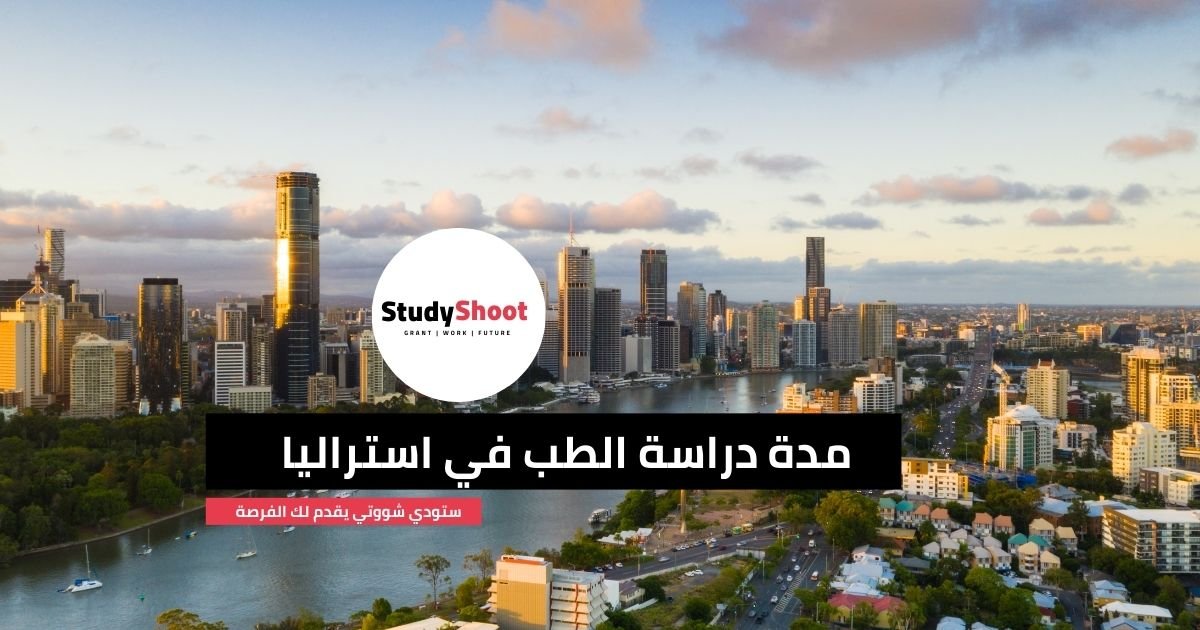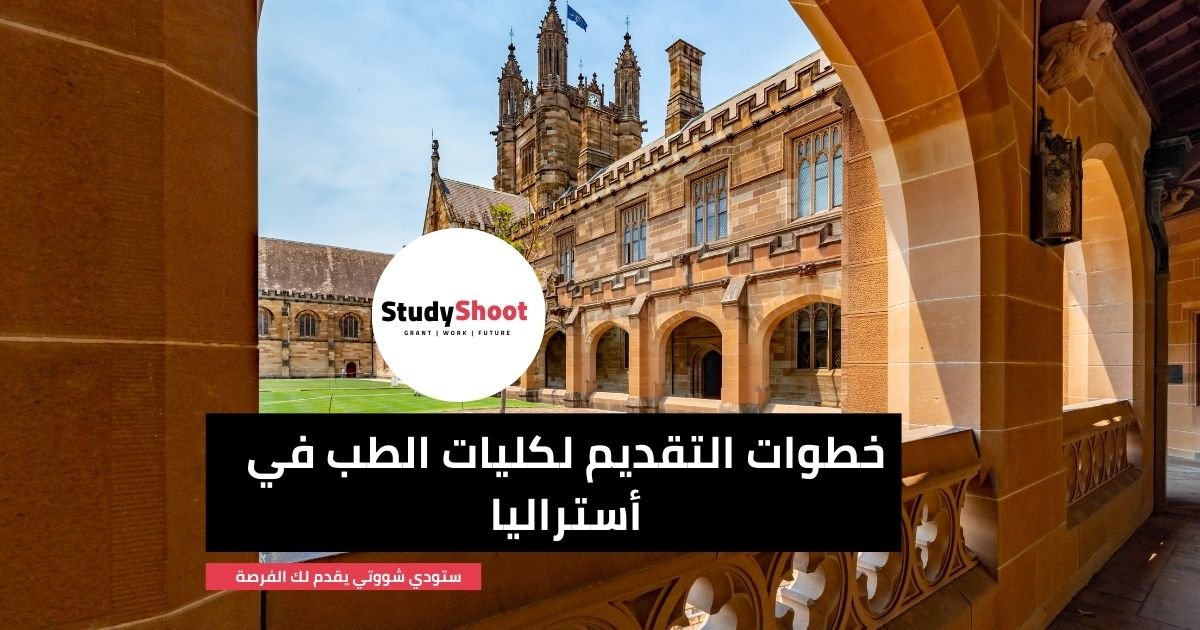تُعَدُّ دراسة الطب في أستراليا من الخيارات الرائدة والطموحة للطلاب الراغبين في التميز الأكاديمي والمهني. تُوفر الجامعات الأسترالية برامج تعليمية متقدمة تعتمد على مناهج مبتكرة، تُدمج بين التعليم النظري والتدريب العملي المكثف في بيئات طبية متطورة.
نظام التعليم الطبي في أستراليا

دراسة الطب في استراليا يعتبر من الأنظمة المتطورة عالمياً. يبدأ الطلاب دراستهم بعد إتمام المرحلة الثانوية، حيث يدخلون في برنامج البكالوريوس الطبي الذي يستمر لمدة 4-6 سنوات. بعد التخرج، يتبع الأطباء برنامج تدريب إلزامي قبل الحصول على ترخيص ممارسة المهنة. يتميز النظام بالتركيز على التعلم العملي والبحث العلمي.
تفاصيل نظام التعليم الطبي الأسترالي:
- قبول دراسة الطب في استراليا التنافسي بناءً على درجات الثانوية العامة واختبارات القبول الطبي
- برامج البكالوريوس الطبي تتراوح مدتها بين 4-6 سنوات
- التركيز على التدريب السريري في المستشفيات التعليمية
- إجراء البحوث العلمية كجزء أساسي من المنهج الدراسي
- التدريب الإلزامي بعد التخرج لمدة سنة أو سنتين كطبيب مقيم
- برامج التخصص الطبي تستغرق 3-7 سنوات إضافية
- التعليم الطبي المستمر إلزامي للحفاظ على الترخيص
- وجود هيئات اعتماد صارمة لضمان جودة التعليم الطبي
- فرص للتبادل الدولي والتدريب في الخارج
- التركيز على مهارات التواصل والأخلاقيات الطبية ضمن المناهج.
هيكل دراسة الطب في استراليا

دراسة الطب في أستراليا تتبع هيكلًا صارمًا يجمع بين التعليم النظري والتدريب العملي. يبدأ الطلاب بالحصول على درجة البكالوريوس في العلوم الصحية أو البيولوجية، يتبعها برنامج طبي مهني يستمر عادةً من 4 إلى 6 سنوات. بعد ذلك، يجب على الخريجين إتمام التدريب الإلزامي (الامتياز) والعمل كأطباء متدربين قبل الحصول على الترخيص الكامل لممارسة المهنة.
- التدريب العملي: يبدأ التدريب العملي من السنوات الأولى في الدراسة، ويستمر خلال فترة الامتياز والتخصص.
- درجة البكالوريوس: تبدأ دراسة الطب بدرجة بكالوريوس في العلوم الصحية أو البيولوجية.
- مدة البكالوريوس: تستمر هذه الدرجة من 3 إلى 4 سنوات.
- التخصص الطبي: بعد البكالوريوس، يلتحق الطلاب ببرنامج طبي مهني.
- مدة البرنامج الطبي: يتراوح هذا البرنامج من 4 إلى 6 سنوات.
- المنهج: يشمل المنهج دراسات نظرية مكثفة بالإضافة إلى تدريب عملي في المستشفيات.
- الامتياز: بعد التخرج، يخضع الطلاب لفترة تدريب إلزامية (سنة الامتياز).
- التسجيل: يجب على الخريجين التسجيل في المجلس الطبي الأسترالي.
- الترخيص: بعد إتمام الامتياز، يمكن للطلاب التقدم للحصول على ترخيص ممارسة الطب.
- التخصص: يمكن للأطباء المتخرجين اختيار التخصص في مجالات مثل الجراحة أو الطب الباطني.
- مدة التخصص: تتراوح مدة التخصص من 3 إلى 7 سنوات حسب التخصص.
- الجامعات: تضم أستراليا عددًا من الجامعات الرائدة في الطب، مثل جامعة سيدني وجامعة ملبورن.
- شروط القبول: تشمل اختبارات القبول مثل UMAT أو GAMSAT، إلى جانب معايير أكاديمية عالية.
- الرسوم الدراسية: تعتبر الرسوم مرتفعة نسبيًا، لكن هناك منح دراسية متاحة.
- الاعتراف الدولي: الشهادات الطبية الأسترالية معترف بها عالميًا.
دراسة الطب في أستراليا تُعد استثمارًا مُجديًا لمستقبل مشرق في المجال الطبي، يجمع بين التعليم المتقدم والفرص المهنية الواسعة.
الاعتماد والاعتراف الدولي بالشهادات الطبية الأسترالية

دراسة الطب في استراليا تحظى باعتراف وتقدير دولي واسع النطاق، مما يعكس جودة التعليم الطبي في أستراليا. يرجع ذلك إلى المعايير العالية التي تتبعها الجامعات الأسترالية والهيئات التنظيمية في مجال التعليم الطبي.
تفاصيل الاعتماد والاعتراف الدولي بالشهادات الطبية الأسترالية:
- اعتراف منظمة الصحة العالمية بجودة التعليم الطبي الأسترالي
- قبول الشهادات الطبية الأسترالية في معظم دول الكومنولث البريطاني
- اتفاقيات ثنائية مع العديد من الدول لتسهيل الاعتراف المتبادل بالمؤهلات الطبية
- إمكانية الحصول على ترخيص مزاولة المهنة في الولايات المتحدة بعد اجتياز الامتحانات المطلوبة
- اعتراف المجلس الطبي العام في المملكة المتحدة بالمؤهلات الطبية الأسترالية
- تسهيلات للأطباء الأستراليين للعمل في دول الاتحاد الأوروبي بعد استيفاء بعض الشروط
- مشاركة أستراليا في مبادرات دولية لتوحيد معايير التعليم الطبي
- سمعة متميزة للجامعات الطبية الأسترالية في التصنيفات العالمية
- فرص واسعة للخريجين الأستراليين للعمل والتدريب في مؤسسات طبية عالمية مرموقة
- اعتراف متبادل مع نيوزيلندا، مما يسمح بحرية الممارسة الطبية بين البلدين
هذا الاعتراف الدولي يفتح آفاقاً واسعة أمام الأطباء الأستراليين للعمل والتخصص في مختلف أنحاء العالم، مما يعزز من قيمة الشهادات الطبية الأسترالية على المستوى العالمي.
أفضل الجامعات الطبية في أستراليا

دراسة الطب في استراليا في جامعة ملبورن
تعد جامعة ملبورن واحدة من أعرق الجامعات الأسترالية وأكثرها تميزًا في مجال الطب. تقدم برامج طبية متكاملة تجمع بين النظرية والتطبيق العملي. تتميز الجامعة بتركيزها القوي على البحث العلمي والابتكار في المجال الطبي. توفر الجامعة دراسة الطب في استراليا وفرص تدريب في أفضل المستشفيات الأسترالية.
- الدرجات الدراسية: بكالوريوس الطب والجراحة (MD)، دكتوراه في الطب (PhD)
- الرسوم: حوالي 80,000 دولار أسترالي سنويًا للطلاب الدوليين
- الموقع: ملبورن، فيكتوريا
- التخصصات الطبية الأهم: الجراحة العامة، طب الأعصاب، طب القلب، الأورام
- أهم الشروط والمعدل: معدل ATAR لا يقل عن 99.95، اجتياز اختبار GAMSAT أو MCAT
دراسة الطب في استراليا في جامعة سيدني
جامعة سيدني هي واحدة من أقدم وأرقى الجامعات في أستراليا. تشتهر بتقديمها لبرامج طبية عالية الجودة تجمع بين التعليم النظري والتدريب العملي المكثف. تتميز الجامعة بمرافقها البحثية المتطورة وشراكاتها مع المستشفيات الرائدة في سيدني. توفر الجامعة للطلاب دراسة الطب في استراليا و فرصًا فريدة للمشاركة في الأبحاث الطبية المبتكرة.
- الدرجات الدراسية: بكالوريوس الطب والجراحة (MD)، ماجستير في العلوم الطبية
- الرسوم: حوالي 85,000 دولار أسترالي سنويًا للطلاب الدوليين
- الموقع: سيدني، نيو ساوث ويلز
- التخصصات الطبية الأهم: طب الطوارئ، الأمراض الجلدية، طب الأطفال، الصحة العامة
- أهم الشروط والمعدل: معدل ATAR لا يقل عن 99.95، درجة عالية في اختبار GAMSAT
دراسة الطب في استراليا في جامعة نيو ساوث ويلز
تعتبر جامعة نيو ساوث ويلز من الجامعات الرائدة في مجال التعليم الطبي في أستراليا. تتميز برامجها الطبية بالتركيز على التعلم القائم على حل المشكلات والتدريب السريري المبكر. توفر الجامعة مرافق بحثية متطورة وفرص للتعاون مع مؤسسات طبية عالمية. تشجع الجامعة الابتكار في مجال الطب وتدعم مشاريع البحث الطلابية.
- الدرجات الدراسية: بكالوريوس الطب والجراحة (MD)، بكالوريوس العلوم الطبية
- الرسوم: حوالي 78,000 دولار أسترالي سنويًا للطلاب الدوليين
- الموقع: سيدني، نيو ساوث ويلز
- التخصصات الطبية الأهم: الجراحة التجميلية، طب العيون، الطب النفسي، الأشعة التشخيصية
- أهم الشروط والمعدل: معدل ATAR لا يقل عن 99, اجتياز اختبار UMAT بدرجة عالية
جامعة كوينزلاند (The University of Queensland)
تعد جامعة كوينزلاند من أبرز الجامعات الأسترالية في مجال البحوث الطبية والتعليم الطبي. تقدم برامج طبية شاملة تركز على التعلم التجريبي والممارسة السريرية. تتميز الجامعة بمرافقها البحثية المتطورة وشراكاتها مع المستشفيات الرائدة في كوينزلاند. توفر الجامعة للطلاب فرصًا للمشاركة في مشاريع بحثية رائدة في مجال الطب.
- الدرجات الدراسية: بكالوريوس الطب والجراحة (MD)، دكتوراه في العلوم الطبية
- الرسوم: حوالي 75,000 دولار أسترالي سنويًا للطلاب الدوليين
- الموقع: بريزبن، كوينزلاند
- التخصصات الطبية الأهم: طب الأسرة، الطب الباطني، طب المناطق الريفية، علم الأمراض
- أهم الشروط والمعدل: معدل ATAR لا يقل عن 99, درجة عالية في اختبار GAMSAT
دراسة الطب في استراليا في جامعة موناش
جامعة موناش هي واحدة من أكبر الجامعات في أستراليا وتتمتع بسمعة عالمية في مجال التعليم الطبي. تقدم برامج طبية متنوعة تجمع بين النظرية والتطبيق العملي. تتميز الجامعة بمرافقها البحثية المتطورة وشبكة واسعة من الشراكات الدولية. توفر الجامعة للطلاب فرصًا للتدريب في مجموعة متنوعة من البيئات الصحية.
- الدرجات الدراسية: بكالوريوس الطب والجراحة (MD)، ماجستير في الصحة العامة
- الرسوم: حوالي 79,000 دولار أسترالي سنويًا للطلاب الدوليين
- الموقع: ملبورن، فيكتوريا
- التخصصات الطبية الأهم: الصحة العالمية، طب الطوارئ، علم الأورام، الطب التجديدي
- أهم الشروط والمعدل: معدل ATAR لا يقل عن 98, اجتياز المقابلة الشخصية
دراسة الطب في استراليا في جامعة أديليد
تعتبر جامعة أديليد من أقدم الجامعات في أستراليا وتتمتع بتاريخ عريق في التعليم الطبي. تقدم برامج طبية متميزة تركز على التعلم القائم على البحث والممارسة السريرية. تتميز الجامعة بمرافقها التعليمية الحديثة وعلاقاتها الوثيقة مع المستشفيات المحلية. توفر الجامعة دراسة الطب في استراليا وبيئة داعمة للطلاب وفرص للمشاركة في الأبحاث الطبية المبتكرة.
- الدرجات الدراسية: بكالوريوس الطب والجراحة (MBBS)، دكتوراه في العلوم الصحية
- الرسوم: حوالي 77,000 دولار أسترالي سنويًا للطلاب الدوليين
- الموقع: أديليد، جنوب أستراليا
- التخصصات الطبية الأهم: طب الأسنان، الصحة العقلية، طب الشيخوخة، علم الوراثة الطبية
- أهم الشروط والمعدل: معدل ATAR لا يقل عن 98.5, اجتياز اختبار UCAT بنجاح
دراسة الطب في استراليا في جامعة أستراليا الوطنية
تعد جامعة أستراليا الوطنية من أفضل الجامعات البحثية في أستراليا. تقدم برامج طبية متقدمة تركز على البحث العلمي والابتكار في مجال الطب. تتميز الجامعة بمرافقها البحثية عالية التقنية وعلاقاتها الوثيقة مع المؤسسات الصحية الوطنية. توفر الجامعة دراسة الطب في استراليا للطلاب وفرصًا فريدة للمشاركة في مشاريع بحثية رائدة على المستوى الوطني.
- الدرجات الدراسية: بكالوريوس الطب والجراحة (MChD)، ماجستير في البحوث الطبية
- الرسوم: حوالي 82,000 دولار أسترالي سنويًا للطلاب الدوليين
- الموقع: كانبيرا، المقاطعة الأسترالية العاصمة
- التخصصات الطبية الأهم: الطب الجزيئي، علم المناعة، طب الأعصاب، الصحة العامة
- أهم الشروط والمعدل: معدل ATAR لا يقل عن 99, خبرة بحثية سابقة مفضلة
دراسة الطب في استراليا في جامعة غرب أستراليا
جامعة غرب أستراليا هي مؤسسة تعليمية رائدة في الجزء الغربي من البلاد. تقدم برامج طبية متكاملة تجمع بين التعليم النظري والتدريب العملي المكثف. تتميز الجامعة بمرافقها الحديثة وشراكاتها مع المستشفيات الرئيسية في بيرث. توفر الجامعة للطلاب فرصًا للتدريب في المناطق الريفية والنائية، مما يعزز فهمهم للصحة في مختلف السياقات.
- الدرجات الدراسية: بكالوريوس الطب والجراحة (MD)، بكالوريوس العلوم الطبية
- الرسوم: حوالي 76,000 دولار أسترالي سنويًا للطلاب الدوليين
- الموقع: بيرث، غرب أستراليا
- التخصصات الطبية الأهم: طب المناطق النائية، الصحة البيئية، طب الأطفال، الجراحة العامة
- أهم الشروط والمعدل: معدل ATAR لا يقل عن 98, اجتياز اختبار UCAT واجتياز المقابلة الشخصية
دراسة الطب في استراليا في جامعة جيمس كوك
تتميز جامعة جيمس كوك بتركيزها على الصحة في المناطق الاستوائية والريفية. تقدم برامج طبية فريدة تركز على التحديات الصحية الخاصة بشمال كوينزلاند والمناطق النائية. تتميز الجامعة بمرافقها البحثية المتخصصة في الطب الاستوائي. توفر الجامعة دراسة الطب في استراليا و فرصًا للتدريب في مجموعة متنوعة من البيئات الصحية، بما في ذلك المجتمعات الأصلية.
- الدرجات الدراسية: بكالوريوس الطب والجراحة (MBBS)، ماجستير في الصحة العامة الاستوائية
- الرسوم: حوالي 70,000 دولار أسترالي سنويًا للطلاب الدوليين
- الموقع: تاونزفيل وكيرنز، كوينزلاند
- التخصصات الطبية الأهم: طب المناطق الاستوائية، صحة السكان الأصليين، طب الطوارئ الريفية
- أهم الشروط والمعدل: معدل OP بين 1-3 (ما يعادل ATAR 99+)، اهتمام بالعمل في المناطق الريفية
دراسة الطب في استراليا في جامعة فليندرز
تقدم جامعة فليندرز برامج طبية مبتكرة تركز على التعلم القائم على المشكلات والتدريب السريري المبكر. تتميز الجامعة بنهجها المتكامل في التعليم الطبي الذي يجمع بين العلوم الأساسية والممارسة السريرية. توفر الجامعة مرافق تعليمية حديثة وفرص للتدريب في مجموعة متنوعة من البيئات الصحية، بما في ذلك المناطق الريفية والنائية.
- الدرجات الدراسية: بكالوريوس الطب والجراحة (MD)، بكالوريوس العلوم الصحية
- الرسوم: حوالي 72,000 دولار أسترالي سنويًا للطلاب الدوليين
- الموقع: أديليد، جنوب أستراليا
- التخصصات الطبية الأهم: طب المناطق الريفية، الصحة العقلية، طب الطوارئ، الطب الباطني
- أهم الشروط والمعدل: معدل ATAR لا يقل عن 95, اجتياز اختبار UCAT ومقابلة شخصية
دراسة الطب في استراليا في جامعة نيوكاسل
تتميز جامعة نيوكاسل ببرنامجها الطبي المبتكر الذي يركز على التعلم القائم على المشكلات. تقدم الجامعة تجربة تعليمية فريدة تجمع بين النظرية والتطبيق العملي منذ المراحل الأولى من الدراسة. تتميز الجامعة بمرافقها البحثية المتطورة وشراكاتها مع المستشفيات المحلية. توفر الجامعة للطلاب فرصًا للتدريب في المناطق الحضرية والريفية.
- الدرجات الدراسية: بكالوريوس الطب (BMed)، دكتوراه في الطب والفلسفة (MD-PhD)
- الرسوم: حوالي 69,000 دولار أسترالي سنويًا للطلاب الدوليين
- الموقع: نيوكاسل، نيو ساوث ويلز
- التخصصات الطبية الأهم: طب الأسرة، الصحة العامة، طب الطوارئ، علم الأورام
- أهم الشروط والمعدل: معدل ATAR لا يقل عن 95, اجتياز اختبار UCAT ومقابلة شخصية
دراسة الطب في استراليا في جامعة ديكين
تقدم جامعة ديكين برنامجًا طبيًا متميزًا يركز على الممارسة السريرية المبكرة والتعلم القائم على المجتمع. تتميز الجامعة بمرافقها التعليمية الحديثة وشراكاتها مع المستشفيات الإقليمية والريفية. توفر الجامعة للطلاب فرصًا فريدة للتدريب في المناطق الريفية والإقليمية، مما يعزز فهمهم للتحديات الصحية في هذه المناطق.
- الدرجات الدراسية: بكالوريوس الطب والجراحة (MD)، ماجستير في العلوم الطبية
- الرسوم: حوالي 74,000 دولار أسترالي سنويًا للطلاب الدوليين
- الموقع: جيلونج وملبورن، فيكتوريا
- التخصصات الطبية الأهم: طب المناطق الريفية، الصحة العامة، طب الأسرة، الجراحة العامة
- أهم الشروط والمعدل: معدل ATAR لا يقل عن 96, اجتياز اختبار GAMSAT ومقابلة شخصية
دراسة الطب في استراليا في جامعة جريفيث
تقدم جامعة جريفيث برنامجًا طبيًا شاملًا يركز على التعليم المتكامل والتدريب السريري المكثف. تتميز الجامعة بنهجها المبتكر في التعليم الطبي الذي يدمج التكنولوجيا الحديثة في عملية التعلم. توفر الجامعة مرافق تعليمية متطورة وفرص للتدريب في مجموعة متنوعة من البيئات الصحية، بما في ذلك المستشفيات الحضرية والريفية.
- الدرجات الدراسية: بكالوريوس الطب والجراحة (MD)، ماجستير في الصحة العامة
- الرسوم: حوالي 71,000 دولار أسترالي سنويًا للطلاب الدوليين
- الموقع: جولد كوست وبريزبن، كوينزلاند
- التخصصات الطبية الأهم: الطب الباطني، طب الطوارئ، الصحة العالمية، الطب الرياضي
- أهم الشروط والمعدل: معدل ATAR لا يقل عن 97, اجتياز اختبار GAMSAT ومقابلة شخصية
دراسة الطب في استراليا في جامعة تسمانيا
تقدم جامعة تسمانيا برنامجًا طبيًا فريدًا يركز على الصحة في المناطق الريفية والنائية. تتميز الجامعة بحجمها الصغير نسبيًا، مما يتيح تجربة تعليمية شخصية وفرص تدريب مكثفة. توفر الجامعة للطلاب فرصًا للتدريب في مجموعة متنوعة من البيئات الصحية في تسمانيا، مما يعزز فهمهم للتحديات الصحية الفريدة في الجزيرة.
- الدرجات الدراسية: بكالوريوس الطب والجراحة (MBBS)، ماجستير في البحوث الطبية
- الرسوم: حوالي 70,000 دولار أسترالي سنويًا للطلاب الدوليين
- الموقع: هوبارت ولونسيستون، تسمانيا
- التخصصات الطبية الأهم: طب المناطق الريفية، الصحة البيئية، طب الشيخوخة، الصحة العقلية
- أهم الشروط والمعدل: معدل ATAR لا يقل عن 95, اجتياز اختبار UCAT ومقابلة شخصية
دراسة الطب في استراليا في جامعة كيرتن
تقدم جامعة كيرتن برنامجًا طبيًا حديثًا يركز على التعليم المتكامل والتدريب العملي المكثف. تتميز الجامعة بمرافقها التعليمية المتطورة وشراكاتها مع المؤسسات الصحية في غرب أستراليا. توفر الجامعة للطلاب فرصًا للمشاركة في البحوث الطبية المبتكرة والتدريب في مجموعة متنوعة من البيئات الصحية.
- الدرجات الدراسية: بكالوريوس الطب والجراحة (MBBS)، ماجستير في الصحة العامة
- الرسوم: حوالي 75,000 دولار أسترالي سنويًا للطلاب الدوليين
- الموقع: بيرث، غرب أستراليا
- التخصصات الطبية الأهم: الطب الوقائي، الصحة المهنية، طب الأسرة، الصحة العامة
- أهم الشروط والمعدل: معدل ATAR لا يقل عن 96, اجتياز اختبار UCAT ومقابلة شخصية
سجل في خدماتنا الآن
نقدم لك خدمات تجهيز الوثائق وترجمتها. استفد من خدمة الاستشارات لدينا واحصل على خصومات.
تعرف على المزيد..لغة دراسة الطب في استراليا

لغة دراسة الطب في استراليا والاختبارات المطلوبة هي جانب مهم يجب على الطلاب الدوليين فهمه جيدًا. الدراسة تتم باللغة الإنجليزية، وهناك عدة اختبارات مطلوبة للقبول. دعني أوضح لك التفاصيل:
الاختبارات اللغوية المطلوبة:
- IELTS (International English Language Testing System): الاختبار الأكثر شيوعًا لإثبات الكفاءة في اللغة الإنجليزية، تتطلب معظم الجامعات درجة إجمالية لا تقل عن 7.0 مع 7.0 كحد أدنى في كل مهارة.
- TOEFL (Test of English as a Foreign Language): بديل مقبول في معظم الجامعات، والدرجة المطلوبة عادة تكون حوالي 100 في اختبار TOEFL iBT.
- PTE Academic (Pearson Test of English Academic): مقبول في العديد من الجامعات الأسترالية، والدرجة المطلوبة عادة تكون حوالي 65-70.
- UCAT ANZ (University Clinical Aptitude Test for Australia and New Zealand): اختبار القدرات السريرية المطلوب للعديد من برامج الطب في أستراليا، ويقيس المهارات المعرفية والقدرات الشخصية المهمة للمهن الطبية.
- GAMSAT (Graduate Australian Medical School Admissions Test): مطلوب للبرامج الطبية للخريجين، ويقيس القدرة على فهم المفاهيم في العلوم الاجتماعية والفيزيائية والبيولوجية.
- MCAT (Medical College Admission Test): قد تقبله بعض الجامعات الأسترالية كبديل للGAMSAT، وهو اختبار موحد يستخدم على نطاق واسع في الولايات المتحدة.
مدة دراسة الطب في استراليا

مدة دراسة الطب في أستراليا تعتمد على المسار التعليمي الذي يتبعه الطالب، وتشمل عادةً المراحل التالية:
مدة دراسة الطب في استراليا (البكالوريوس):
- بعض الطلاب يختارون إكمال درجة البكالوريوس في العلوم الصحية أو البيولوجية قبل التقدم للطب. هذا يستغرق عادةً من 3 إلى 4 سنوات.
مدة دراسة الطب في استراليا (الدكتوراه في الطب – MD):
- بعد إتمام البكالوريوس، يلتحق الطلاب ببرنامج طبي مهني يستمر عادةً لمدة 4 سنوات. أو
- يمكن للطلاب الالتحاق مباشرة ببرنامج طبي متكامل (دكتوراه في الطب – MD) بعد إنهاء المرحلة الثانوية، والذي يستغرق عادةً 5 إلى 6 سنوات.
مدة دراسة الطب في استراليا (التدريب السريري):
- بعد التخرج من البرنامج الطبي، يخضع الطلاب لسنة تدريبية إلزامية تعرف بسنة الامتياز (Internship). هذه السنة ضرورية للحصول على الترخيص لممارسة الطب.
إجمالاً، مدة دراسة الطب في أستراليا تتراوح بين 7 إلى 10 سنوات، حسب المسار التعليمي المختار.
اختبار القبول في الدراسات الطبية الأسترالية

اختبار القبول في الدراسات الطبية الأسترالية (GAMSAT) هو اختبار موحد يستخدم لتقييم المرشحين للقبول في برامج الدراسات العليا في الطب والطب البيطري وطب الأسنان في أستراليا وأيرلندا والمملكة المتحدة. إليك نظرة عامة على الاختبار:
يتكون الاختبار من ثلاثة أقسام رئيسية.
- القسم الأول: التفكير في العلوم الإنسانية والعلوم الاجتماعية
- القسم الثاني: التفكير العلمي والكتابة
- القسم الثالث: التفكير في العلوم البيولوجية والفيزيائية
- يستغرق الاختبار حوالي 5.5 ساعات بالإجمال.
- يغطي مواضيع متنوعة في العلوم والرياضيات والعلوم الإنسانية.
- عادة ما يتم إجراؤه مرتين سنويًا، في مارس وسبتمبر.
- يتم تقييم كل قسم على مقياس من 0 إلى 100، مع متوسط درجة إجمالي.
- يعتبر جزءًا مهمًا من عملية القبول في الكليات الطبية، إلى جانب المعدل التراكمي والمقابلات.
تخصصات الطب الأهم في استراليا

التخصصات الطبية الرئيسية في أستراليا
طب الأسرة (General Practice)
- يعتبر حجر الأساس في نظام الرعاية الصحية الأسترالي
- يوفر رعاية شاملة ومستمرة للأفراد والعائلات
- طلب متزايد خاصة في المناطق الريفية والنائية
طب الطوارئ (Emergency Medicine)
- تخصص حيوي في المستشفيات الأسترالية
- يتعامل مع حالات طبية حرجة وإصابات خطيرة
- يتطلب مهارات سريعة في اتخاذ القرارات وإدارة الأزمات
الطب الباطني (Internal Medicine)
- يغطي مجموعة واسعة من الأمراض الداخلية
- يشمل تخصصات فرعية مثل أمراض القلب وأمراض الجهاز الهضمي
- مطلوب بشدة نظرًا لزيادة الأمراض المزمنة في المجتمع
طب الأطفال (Pediatrics)
- يركز على صحة ورعاية الأطفال والمراهقين
- يشمل الرعاية الوقائية والعلاجية
- مهم خاصة مع التركيز المتزايد على صحة الأطفال في أستراليا
الجراحة العامة (General Surgery)
- يشمل مجموعة واسعة من الإجراءات الجراحية
- يتطلب مهارات تقنية عالية وقدرة على التعامل مع حالات معقدة
- فرص للتخصص في مجالات مثل جراحة الأورام أو جراحة الأطفال
طب النساء والتوليد (Obstetrics and Gynecology)
- يعنى بصحة المرأة والحمل والولادة
- مطلوب بشكل كبير مع زيادة الوعي بصحة المرأة
- يشمل مجالات متخصصة مثل علاج العقم وطب الأورام النسائية
طب الأعصاب (Neurology)
- يتعامل مع اضطرابات الجهاز العصبي
- أهمية متزايدة مع شيخوخة السكان وزيادة أمراض مثل الخرف
- يشمل مجالات بحثية مثيرة في علوم الدماغ
الطب النفسي (Psychiatry)
- يركز على الصحة العقلية والاضطرابات النفسية
- طلب متزايد مع زيادة الوعي بأهمية الصحة النفسية
- يشمل تخصصات فرعية مثل طب نفس الأطفال وطب نفس الشيخوخة
طب الأشعة (Radiology)
- يستخدم التصوير الطبي لتشخيص وعلاج الأمراض
- يتطور باستمرار مع التقدم التكنولوجي
- يشمل تخصصات مثل الأشعة التداخلية والتصوير العصبي
طب الأورام (Oncology)
- يتعامل مع تشخيص وعلاج السرطان
- مجال متنامي مع التقدم في العلاجات المستهدفة والمناعية
- يشمل البحث المكثف والتجارب السريرية
طب المناطق الريفية والنائية (Rural and Remote Medicine)
- تخصص فريد يجمع بين عدة مجالات طبية
- مهم لتلبية احتياجات السكان في المناطق البعيدة عن المدن الكبرى
- يتطلب مهارات متنوعة والقدرة على العمل في بيئات محدودة الموارد
الصحة العامة (Public Health)
- يركز على الوقاية من الأمراض وتعزيز الصحة على مستوى السكان
- يشمل مجالات مثل الوبائيات وإدارة الصحة العامة
- دور متزايد الأهمية في ظل التحديات الصحية العالمية
شروط دراسة الطب في استراليا

هذه القائمة تشمل الشروط الرئيسية لدراسة الطب في استراليا. يرجى ملاحظة أن المتطلبات قد تختلف قليلاً بين الجامعات، لذا يُنصح بمراجعة شروط القبول الخاصة بكل جامعة على حدة.
- إكمال درجة البكالوريوس (غالبًا في مجال العلوم أو الصحة)
- الحصول على معدل تراكمي عالٍ (GPA) في الدراسة الجامعية
- اجتياز اختبار القبول في الدراسات الطبية الأسترالية (GAMSAT) بدرجة جيدة
- إثبات الكفاءة في اللغة الإنجليزية من خلال اختبارات مثل IELTS أو TOEFL
- تقديم خطابات توصية من أساتذة أو مهنيين في المجال الطبي
- اجتياز المقابلة الشخصية مع لجنة القبول في الكلية الطبية
- إظهار الخبرة أو التطوع في المجال الصحي (يفضل ولكنه غير إلزامي في بعض الجامعات)
- تقديم بيان شخصي يوضح الدافع لدراسة الطب والأهداف المهنية
- الحصول على تأشيرة طالب أسترالية
- تأمين التمويل اللازم لتغطية تكاليف الدراسة والمعيشة
- اجتياز الفحوصات الطبية المطلوبة
- تقديم سجل جنائي نظيف (إن طُلب)
الاوراق المطلوبة للتسجيل
عند التقديم لدراسة الطب في استراليا، يتعين على الطالب تجهيز الاوراق المطلوبة للتسجيل في الطب باستراليا بعناية لضمان اكتمال عملية القبول. تبدأ هذه العملية بتقديم شهادة الثانوية العامة أو ما يعادلها، والتي تُعد أساسًا لتقييم الجدارة الأكاديمية. يجب أيضًا تقديم شهادات اللغة الإنجليزية مثل IELTS أو TOEFL، حيث تُعتبر الكفاءة اللغوية من المتطلبات الأساسية.
- نسخة مصدقة من شهادة البكالوريوس
- كشف درجات رسمي يوضح المعدل التراكمي (GPA)
- نتيجة اختبار GAMSAT
- شهادة إتقان اللغة الإنجليزية (IELTS أو TOEFL)
- السيرة الذاتية (CV) محدثة
- خطابات توصية (عادة 2-3 خطابات)
- بيان شخصي يوضح الدافع لدراسة الطب
- نسخة من جواز السفر ساري المفعول
- صور شخصية حديثة (حسب متطلبات الجامعة)
- وثائق تثبت القدرة المالية على تغطية تكاليف الدراسة
- نموذج طلب القبول المكتمل للجامعة المعنية
- شهادات الخبرة أو التطوع في المجال الصحي (إن وجدت)
- نتائج الفحوصات الطبية (قد تُطلب لاحقًا في عملية القبول)
- شهادة حسن سير وسلوك أو سجل جنائي نظيف (إذا طُلب)
- ترجمة معتمدة لجميع الوثائق غير الإنجليزية
خطوات التقديم لكليات الطب في أستراليا

- قم بالبحث عن الجامعات الأسترالية التي تقدم دراسة الطب في استراليا.
- قارن بين البرامج المختلفة ومتطلبات القبول لكل جامعة
- اختر الجامعات التي تناسب أهدافك وقدراتك الأكاديمية
- تأكد من أن مؤهلاتك الأكاديمية تلبي الحد الأدنى لمتطلبات القبول
- قم بإجراء اختبارات اللغة الإنجليزية المطلوبة (مثل IELTS أو TOEFL)
- أكمل الاختبارات المطلوبة مثل UCAT ANZ أو GAMSAT حسب متطلبات الجامعة
- جهز نسخ مصدقة من شهاداتك الدراسية وكشوف الدرجات
- اكتب بيان شخصي قوي يوضح دوافعك لدراسة الطب
- احصل على خطابات توصية من معلميك أو مشرفيك السابقين
- جهز سيرتك الذاتية موضحاً أي خبرات ذات صلة بالمجال الطبي
- قم بزيارة المواقع الإلكترونية للجامعات التي اخترتها
- ابحث عن قسم القبول الدولي أو التواصل الخاص بالطلاب الدوليين
أرسل بريدًا إلكترونيًا استفساريًا يتضمن دراسة الطب في استراليا:
- تقديم نفسك وخلفيتك التعليمية
- استفسارات محددة عن برنامج الطب
- طلب معلومات عن عملية التقديم والمواعيد النهائية
- قم بتعبئة نموذج الطلب عبر الإنترنت للجامعات المختارة
- أرفق جميع الوثائق المطلوبة (الشهادات، نتائج الاختبارات، البيان الشخصي، الخ)
- ادفع رسوم التقديم المطلوبة
- تأكد من استلام الجامعة لطلبك عبر إرسال بريد إلكتروني للتأكيد
- كن مستعدًا للرد على أي استفسارات إضافية من قسم القبول
- تابع حالة طلبك بانتظام عبر بوابة الطلاب الإلكترونية أو عبر البريد الإلكتروني
- إذا تمت دعوتك لمقابلة، استعد جيدًا لها
- قد تكون المقابلة عبر الإنترنت للطلاب الدوليين، فتأكد من جاهزية معداتك التقنية
- عند استلام عرض القبول، قم بمراجعته بعناية
- أكد قبولك للعرض ضمن المهلة المحددة
- ادفع أي رسوم مطلوبة لتأكيد مكانك في البرنامج
- بعد قبول العرض، ستحصل على خطاب قبول رسمي (CoE)
- استخدم هذا الخطاب للتقدم بطلب تأشيرة الطالب الأسترالية
- قم بترتيب السكن والتأمين الصحي
- احجز تذاكر السفر واستعد للانتقال إلى أستراليا
شروط الفيزا الدراسية لدراسة الطب في أستراليا

للحصول على تأشيرة دراسية لدراسة الطب في أستراليا، يجب على الطلاب استيفاء مجموعة من الشروط، وهي كالتالي:
- القبول في برنامج طبي معتمد في إحدى الجامعات الأسترالية المعترف بها
- إثبات الكفاءة في اللغة الإنجليزية (عادة IELTS بدرجة لا تقل عن 7.0 أو ما يعادلها)
- تقديم خطاب قبول من الجامعة (Confirmation of Enrolment – CoE)
- إثبات القدرة المالية لتغطية الرسوم الدراسية ونفقات المعيشة (حوالي 21,041 دولار أسترالي سنويًا للمعيشة بالإضافة إلى الرسوم الدراسية)
- التأمين الصحي للطلاب الأجانب (Overseas Student Health Cover – OSHC) لكامل مدة الدراسة
- اجتياز متطلبات الشخصية الجيدة (شهادة حسن سير وسلوك)
- اجتياز الفحص الطبي المطلوب
- تقديم جواز سفر ساري المفعول
- دفع رسوم طلب التأشيرة (حوالي 630 دولار أسترالي)
- تعبئة نموذج طلب التأشيرة عبر الإنترنت (نموذج 157A)
- تقديم صور شخصية حديثة بحجم جواز السفر
- إثبات النية الحقيقية للدراسة (عدم وجود نية للهجرة الدائمة)
- تقديم السيرة الذاتية أو بيان شخصي يوضح الدوافع للدراسة في أستراليا
- إثبات عدم وجود ديون مستحقة للحكومة الأسترالية
- الالتزام بشروط التأشيرة السابقة إن وجدت
- تقديم موافقة الوالدين أو الوصي القانوني للطلاب تحت سن 18 عامًا
- إثبات الإقامة المناسبة للطلاب تحت سن 18 عامًا
- الالتزام بشروط العمل أثناء الدراسة (عادة 40 ساعة كل أسبوعين أثناء الفصل الدراسي)
الحياة الطلابية لطلاب الطب في أستراليا

تتميز بتجربة غنية ومتنوعة تجمع بين الجوانب الأكاديمية والتفاعلات الاجتماعية والتدريب العملي.
- البرامج الأكاديمية المكثفة: طلاب الطب يواجهون جداول دراسية مكثفة تشمل المحاضرات، المختبرات، والدروس السريرية. يتطلب الأمر التزامًا كبيرًا من الوقت والتركيز.
- التفاعل مع المجتمع الطبي: الطلاب يحصلون على فرص للتفاعل مع الأطباء والمختصين في المستشفيات والمراكز الطبية، مما يعزز من خبراتهم العملية.
- النشاطات الطلابية: الجامعات الأسترالية تقدم مجموعة واسعة من النشاطات الطلابية، بما في ذلك النوادي والجمعيات الطبية، التي تساعد الطلاب على بناء شبكات مهنية وتقوية مهاراتهم القيادية.
- الدعم الأكاديمي والنفسي: توفر الجامعات دعمًا شاملاً للطلاب، بما في ذلك المساعدة الأكاديمية والإرشاد النفسي لمساعدتهم في مواجهة التحديات الأكاديمية والشخصية.
- الفعاليات الاجتماعية: الحياة الاجتماعية مزدهرة وتشمل الأحداث الثقافية والرياضية والحفلات، مما يوفر فرصة للطلاب للاسترخاء والتواصل مع زملائهم.
السكن الجامعي لدراسة الطب في استراليا:
- خيارات السكن: الجامعات تقدم مجموعة من خيارات السكن داخل الحرم الجامعي وخارجه. السكن داخل الحرم الجامعي يوفر سهولة الوصول إلى الفصول الدراسية والمرافق الجامعية.
- السكن المشترك: يمكن للطلاب اختيار السكن المشترك مع زملائهم، مما يقلل من تكاليف المعيشة ويوفر تجربة اجتماعية مميزة.
- السكن الخاص: بعض الطلاب يفضلون استئجار شقق أو منازل خارج الحرم الجامعي، والتي قد تكون أغلى قليلاً ولكن توفر خصوصية أكبر.
- التكاليف: تختلف تكاليف السكن حسب المدينة ونوع الإقامة، ولكنها تعتبر جزءًا مهمًا من ميزانية الطالب. تتراوح تكاليف السكن الجامعي بين 200 إلى 450 دولار أسترالي أسبوعيًا.
- المرافق: السكن الجامعي عادةً ما يشمل مرافق مثل الإنترنت، المطبخ، غرف الدراسة، والصالات الرياضية.
- السلامة: توفر الجامعات أمانًا عاليًا في السكن الجامعي، بما في ذلك الحراسة على مدار الساعة وأنظمة الأمان الحديثة.
بشكل عام، تقدم الجامعات الأسترالية بيئة داعمة ومحفزة لطلاب الطب، حيث يتمكنون من تحقيق التوازن بين التزاماتهم الأكاديمية والحياة الاجتماعية، مما يسهم في تجربة تعليمية شاملة ومتكاملة.
تكاليف المعيشة ودراسة الطب في استراليا

تكاليف المعيشة في المدن الأسترالية الكبرى تختلف بشكل كبير بناءً على المدينة وأسلوب الحياة الفردي. بشكل عام، المدن الكبرى مثل سيدني وملبورن تُعتبر الأكثر تكلفة، بينما تكون تكاليف المعيشة في مدن مثل بريزبن وأديليد أقل إلى حد ما. إليك نظرة عامة على تكاليف المعيشة في بعض المدن الكبرى:
تكاليف المعيشة في سيدني لطلاب الطب:
- الإيجار: مرتفع جدًا، خاصة في المناطق المركزية. شقة بغرفة نوم واحدة قد تكلف ما بين 2,500 إلى 3,500 دولار أسترالي شهريًا.
- النقل: بطاقة النقل العام الشهرية تكلف حوالي 160-200 دولار أسترالي.
- الطعام: الوجبات في المطاعم المتوسطة تكلف حوالي 20-30 دولارًا أستراليًا للوجبة.
تكاليف المعيشة في ملبورن لطلاب الطب:
- الإيجار: أقل قليلاً من سيدني، لكن لا يزال مرتفعًا. شقة بغرفة نوم واحدة تكلف ما بين 1,800 إلى 2,800 دولار أسترالي شهريًا.
- النقل: بطاقة النقل العام الشهرية تكلف حوالي 150-180 دولار أسترالي.
- الطعام: تكلفة الوجبة في مطعم متوسط حوالي 18-28 دولارًا أستراليًا.
تكاليف المعيشة في بريزبن لطلاب الطب:
- الإيجار: أكثر اقتصادية مقارنةً بسيدني وملبورن. شقة بغرفة نوم واحدة تكلف ما بين 1,600 إلى 2,200 دولار أسترالي شهريًا.
- النقل: بطاقة النقل العام الشهرية تكلف حوالي 130-160 دولار أسترالي.
- الطعام: تكلفة الوجبة في مطعم متوسط حوالي 15-25 دولارًا أستراليًا.
تكاليف المعيشة في أديليد لطلاب الطب:
- الإيجار: واحدة من أرخص المدن الكبرى. شقة بغرفة نوم واحدة تكلف ما بين 1,200 إلى 1,800 دولار أسترالي شهريًا.
- النقل: بطاقة النقل العام الشهرية تكلف حوالي 100-140 دولار أسترالي.
- الطعام: تكلفة الوجبة في مطعم متوسط حوالي 15-25 دولارًا أستراليًا.
تكاليف المعيشة في بيرث لطلاب الطب:
- الإيجار: تكاليف مشابهة لبريزبن. شقة بغرفة نوم واحدة تكلف ما بين 1,500 إلى 2,200 دولار أسترالي شهريًا.
- النقل: بطاقة النقل العام الشهرية تكلف حوالي 130-160 دولار أسترالي.
- الطعام: تكلفة الوجبة في مطعم متوسط حوالي 18-28 دولارًا أستراليًا.
عوامل أخرى:
- المرافق العامة (الكهرباء، الماء، الإنترنت): تتراوح تكلفتها الشهرية من 200 إلى 400 دولار أسترالي حسب حجم المنزل واستهلاك الفرد.
- التأمين الصحي: يُعد أمرًا إلزاميًا للطلاب الدوليين، ويكلف حوالي 450-600 دولار أسترالي سنويًا.
بشكل عام، يُنصح بميزانية شهرية تتراوح بين 2,000 إلى 4,000 دولار أسترالي لتغطية تكاليف المعيشة أثناء دراسة الطب في استراليا بشكل مريح في معظم المدن الكبرى.

